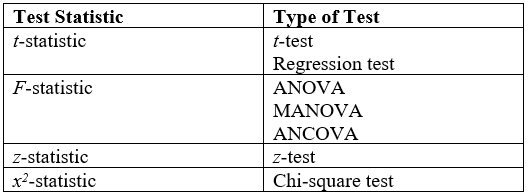|
Squared Ranks Test
In statistics, the Conover squared ranks test is a non-parametric version of the parametric Levene's test for equality of variance. Conover's squared ranks test is the only equality of variance test that appears to be non-parametric. Other tests of significance of difference of data dispersion are parametric (i.e., are difference of variance tests). The squared ranks test is arguably a test of significance of difference of data dispersion not variance ''per se''. This becomes important, for example, when the Levene's test fails to satisfy the rather generous conditions for normality associated with that test and is a default alternative under those conditions for certain statistical software programs like the VarianceEquivalenceTest routine in Mathematica. In addition to Levene's test, other parametric tests for equality of variance include the Bartlett, Brown-Forsythe, and Fisher Ratio tests. References Statistical tests Analysis of variance {{statistics-stub ... [...More Info...] [...Related Items...] OR: [Wikipedia] [Google] [Baidu] |
Levene's Test
In statistics, Levene's test is an inferential statistic used to assess the equality of variances for a variable calculated for two or more groups. This test is used because some common statistical procedures assume that variances of the populations from which different samples are drawn are equal. Levene's test assesses this assumption. It tests the null hypothesis that the population variances are equal (called ''homogeneity of variance'' or ''homoscedasticity''). If the resulting ''p''-value of Levene's test is less than some significance level (typically 0.05), the obtained differences in sample variances are unlikely to have occurred based on random sampling from a population with equal variances. Thus, the null hypothesis of equal variances is rejected and it is concluded that there is a difference between the variances in the population. Levene's test has been used in the past before a comparison of means to inform the decision on whether to use a pooled t-test or the ... [...More Info...] [...Related Items...] OR: [Wikipedia] [Google] [Baidu] |
Statistical Tests
A statistical hypothesis test is a method of statistical inference used to decide whether the data provide sufficient evidence to reject a particular hypothesis. A statistical hypothesis test typically involves a calculation of a test statistic. Then a decision is made, either by comparing the test statistic to a critical value or equivalently by evaluating a ''p''-value computed from the test statistic. Roughly 100 specialized statistical tests are in use and noteworthy. History While hypothesis testing was popularized early in the 20th century, early forms were used in the 1700s. The first use is credited to John Arbuthnot (1710), followed by Pierre-Simon Laplace (1770s), in analyzing the human sex ratio at birth; see . Choice of null hypothesis Paul Meehl has argued that the epistemological importance of the choice of null hypothesis has gone largely unacknowledged. When the null hypothesis is predicted by theory, a more precise experiment will be a more severe test of t ... [...More Info...] [...Related Items...] OR: [Wikipedia] [Google] [Baidu] |
